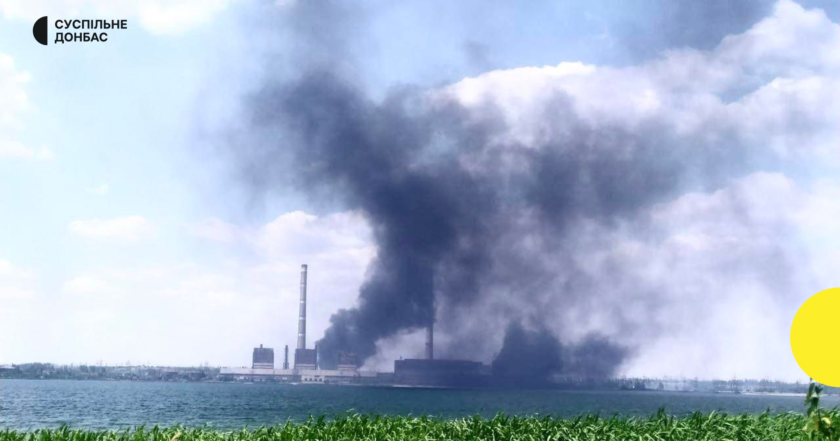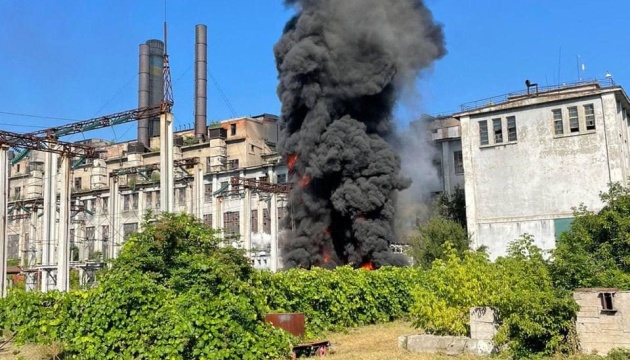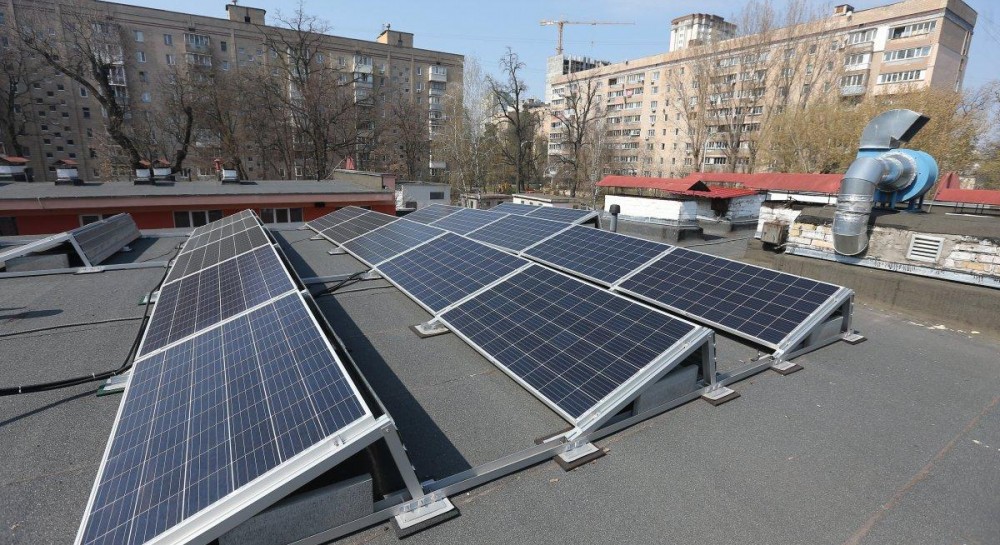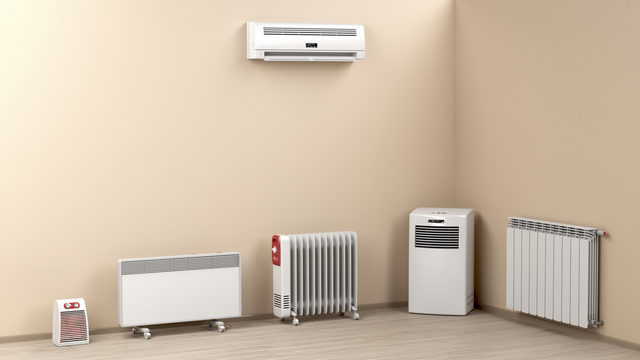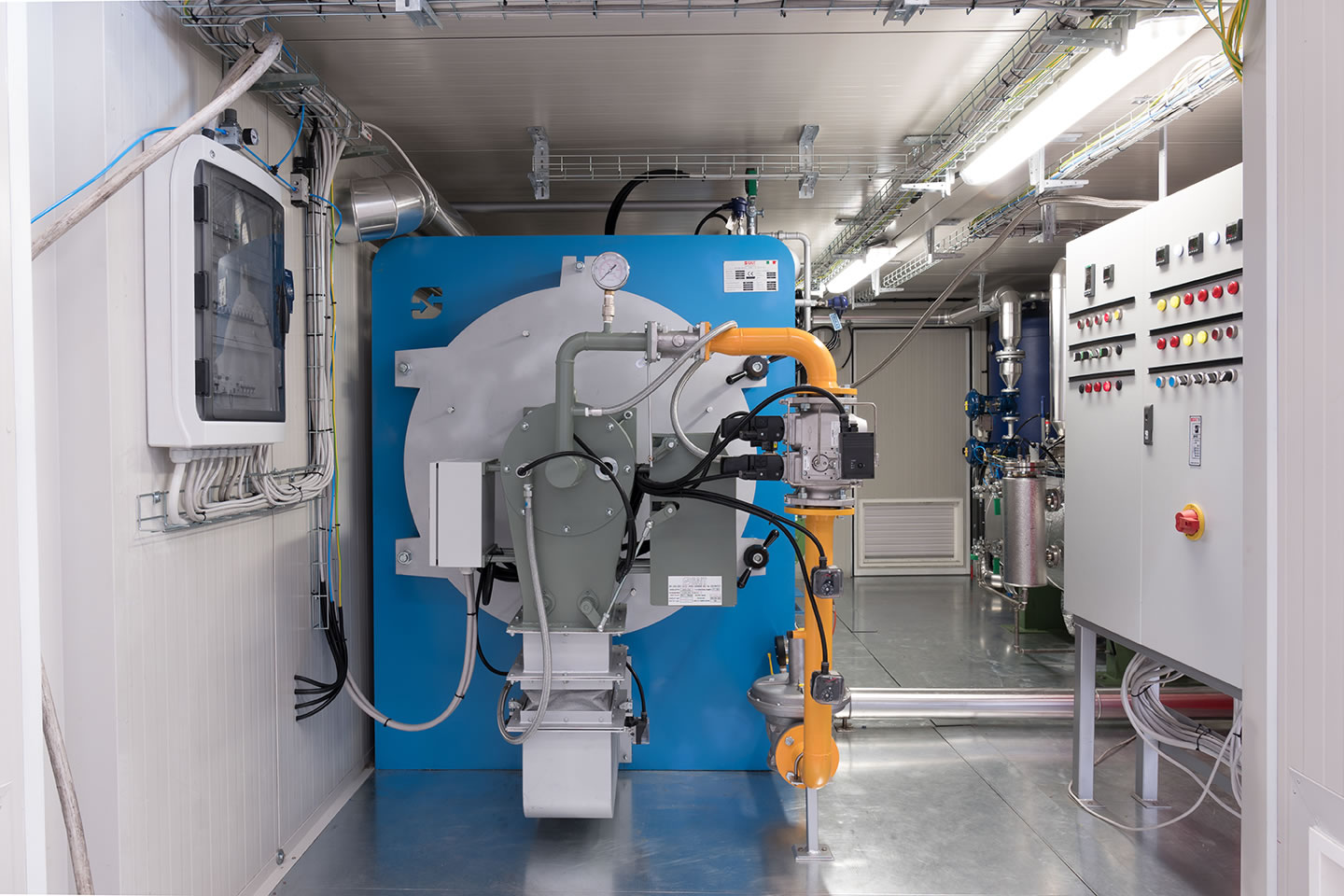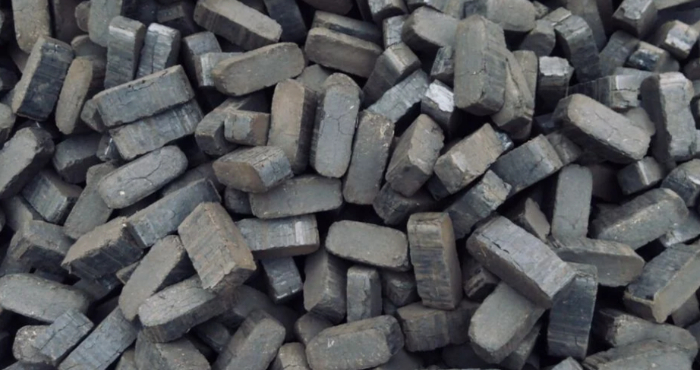
What is the problem?
Since the beginning of the full-scale war, explosions have happened at many TPPs. The last two were on July 18, when the russians shelled the Kryvorizka TPP. On June 22, there was an attack on Ukraine's most powerful Vuhlehirska TPP in the Donetsk region. The Okhtyrska TPP also suffered a lot due to russia's aggression.
The DTEK energy holding noted that only workers were on the territory of the power plant. And missile attacks on thermal power plants are nothing but a terrorist act. Firstly, such attacks lead to a temporary sharp deterioration of air quality in the city. Secondly, it leads to a more dangerous consequence — they can leave thousands of people without heat this winter. Environmental monitoring expert Maksym Soroka claims that hitting thermal power plants is a new tactic of the russians:
"russia has changed the scorched earth tactics," says the ecologist. "If 2-3 weeks ago they were actively destroying our agricultural infrastructure, now they have focused on the fuel and energy infrastructure. And I'm not talking about oil depots, no, I'm talking about small and large gas distribution stations, our central gas pipelines, city heat-generating boiler houses, and so on. I can assume that they set themselves such a goal, simply to create a new humanitarian crisis in the winter."
But let's deal with everything step by step. The damage from thermal power plant strikes is so long-lasting that it can be divided into several stages.
First phase: polluted air and dust
Environmentalists who monitor the state of the air in Ukraine every time after any shelling by the russians record the same regularity: first, due to the destruction, there is always a dust release of large fractions, and along with this, harmful chemicals enter the air. We have already talked about this in materials about the ecological sustainability of cities.
When a projectile hits the fuel warehouses near the TPP, it provokes fires, and such damage, according to expert Maksym Soroka, can be compared to the damage caused by the burning of oil storage facilities. Anna Ambrosova, industrial ecologist, public activist, and expert of the coalition of public organizations "Stop poisoning Kryvyi Rih," adds:
"Everything depends on what the station is powered by: coal, gas, or fuel oil. There are slag pits near the coal-fired heat generating stations. During the war, enterprises cut back on environmental protection, and dust suppression measures are not carried out. If projectiles hit such objects, dust rises into the air, and a large amount of carbon dioxide, nitrogen oxide, and volatile organic substances are released, which are dangerous for the human body. If the ash gets into the water, it can change the transparency and turbidity characteristics of the water, which in turn affects flora and fauna in the reservoirs. In addition, this ash contains heavy metals, including arsenic," the expert explains.
However, the structures of slag pit dams were built in the 60s and 70s of the last century. These were the times of the arms race, and all strategic objects provided protection against such damage and had a certain reserve of strength against explosions. So it is impossible to talk about short-term damage to the environment immediately after the shelling, which people can feel on themselves, Soroka assures. According to him, there is a greater risk of dying because of the shelling than polluted air.
The second phase: long-term damage to the environment
At least 140 million hryvnias will be needed to repair the main transformer destroyed by the russians at the Chernihiv thermal power station, the main source of heat for 600 high-rise buildings. If you count all the necessary repairs at the destroyed thermal power plants, the amount will be 803 million. Meanwhile, the Cabinet of Ministers has allocated a little less than three hundred million for restoring Chernihiv, Kremenchuk, and Okhtyr thermal power stations.
And the issue is not only a lack of funds. It is impossible to rebuild the TPP quickly.
"Yes, I see wonderful plans — a five-year plan in 3 days, but this, again, is Sovietism. A five-year plan in 3 days is impossible because you need to clear it up first, then think about where to find equipment that can replace damaged structural elements and the heat-generating equipment itself," says Maksym Soroka.
The real disaster is that if the local authorities do not have time to decide on introducing heat energy alternative sources for damaged TPP, people will look for solutions on their own. A scenario in which massive wood cutting will begin and harmful emissions into the air will increase many times is entirely possible.
Will green energy help?
A logical remark arises: we are moving towards green energy; why not replace such energy installations with safer alternatives? We are moving, but what works well, in theory, may not always work in practice. And here's why.
It is impossible to heat a high-rise building with a "burner"; the same applies to, for example, solar batteries. Maksym Soroka told about the project proposed by ecoactivists and even approved by the European Commission. It consists in installing solar batteries on a high-rise building.
"I don't know what they are thinking about. More than 40 kW of power is needed to heat Khrushchev-style houses. In terms of size, such panels are larger than 20 such houses, and at night, during the most difficult period for heating, there is no sunshine. It won't work, that's all," says the expert.
According to him, now, many ideas offer either costly technologies or technologies that are not available in Ukraine:
"This is all great, but a solution is needed here and now, and you offer solutions that can be implemented in 5-6 years. We have to think about it now and how to do it in the long term. But let me remind you that winter will come not in 5-6 years."
What is the solution?
Alternatives that will work
In fact, everything is not as bad as it seems. Some solutions can be implemented before the start of this winter, and local governments have already started preparations. They are not ideal but adequate for Ukrainian realities.
Electric heating
And here we are talking about ordinary convectors available to everyone. The disadvantage, in this case, is the overloading of the power grid. It can already lead to the fact that residents of high-rise buildings will constantly have power turnoffs, and the risk of fires will be greater.
"Now, many local self-government bodies are starting to strengthen the power grids. I perfectly understand what they are preparing for," says Soroka.
Modular stations
This year, Odesa and Mykolaiv regions decided to heat houses in this way in winter. Modular inserts with a cable to the nearest electrical substation are placed on the main pipes at the entrance to the house so as not to overload the house's electrical network. The modular insert, using electricity from the substation, will heat water for heating the house.
Those residents of high-rise buildings who have installed individual heating points will also have heat:
"In the Dnipropetrovsk, Poltava, and Kharkiv region, individual heating points on solid fuel and alternative fuel are popular in high-rise buildings. Where there is a lot of agricultural waste, farmers will collect every straw from the field because this year, it will be our gas. This is reality," says Soroka.
Transition to solid fuel
In the destroyed heat-generating boiler houses, you can install and start boiler units – boilers that work on solid fuel:
"It is necessary to understand that, perhaps, this winter, there will be no gas at all. Thus, where possible, you can try to adjust boiler houses to solid fuel, which is available in Ukraine," the expert suggests. He adds: "All these low-power power plants, mobile heat points, mobile solid fuel boilers that can be connected modularly to the system and provide heat —are low-efficient and lead to higher emission of pollutants into the environment. And there will be a second wave of pollution due to the shelling of the thermal power plants. The environmental damage will be terrible, but it is something that must be done. We have to take care of our population, and only then think about restoring the environment."
Newsletter
Digest of the most interesting news: just about the main thing




